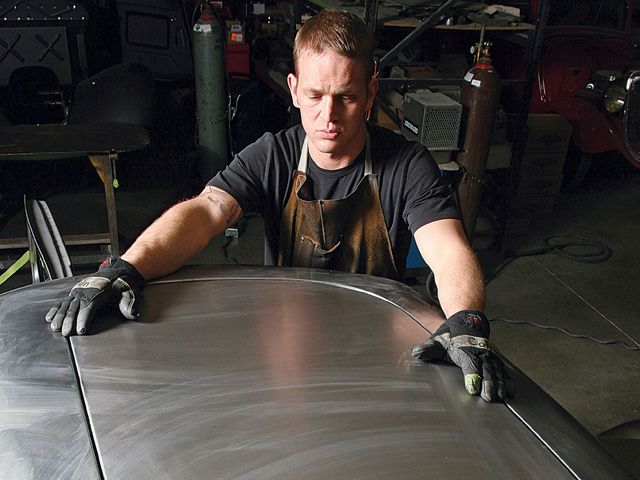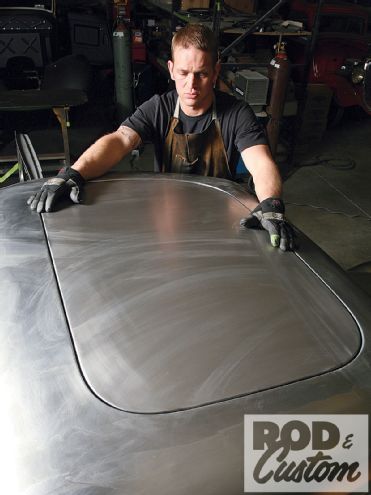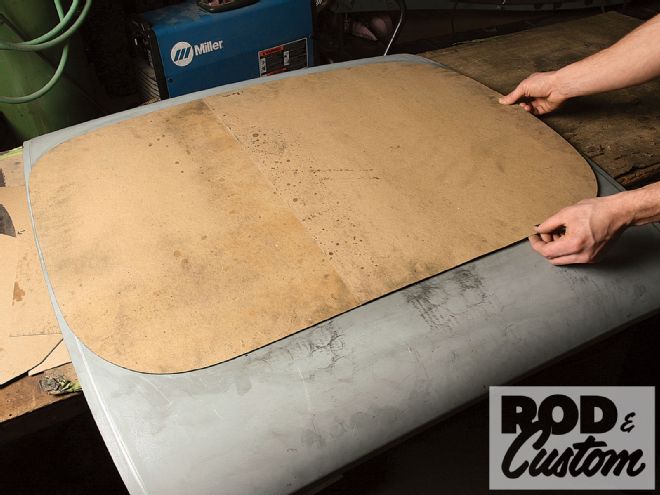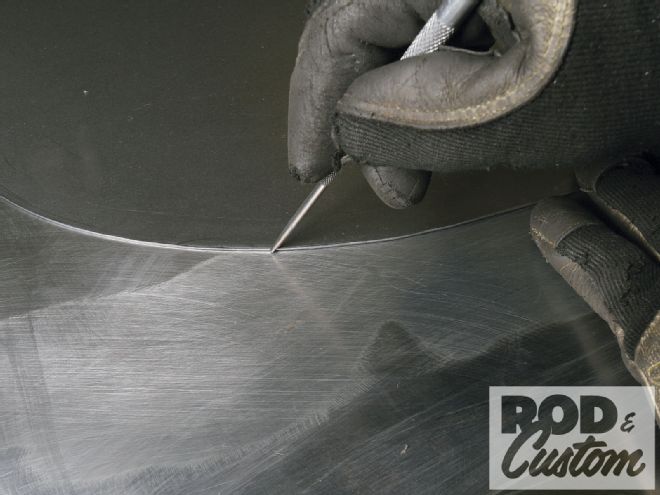
They're different by today's standards and oftentimes different gets interpreted as cool, but cloth roof inserts were anything but desirable when they were common. Their existence was a reminder of the state of technology at the time; deep-draw stamping techniques either didn't exist or weren't economically feasible for most manufacturers until the mid-to-late '30s. Until then, manufacturers made a perimeter roof from several simple panels and filled the opening with wood, chicken wire, burlap, cotton batting, and leatherette. Unless it was for a luxury car, forming a metal panel, welding it in place, and finishing it well enough to look good in paint just didn't make economical sense.

How the tables have turned. Whereas a soft top was once an economic necessity, reproducing one now can cost as much as (or more than) filling the top with steel. The idea isn't new; builders as far back as the '40s filled open tops with roof panels scalped from later model cars.
But even that mode is relatively obsolete nowadays. A trip to any production bone yard proves that manufacturers long ago departed from the pronounced compound curves that once made top skins perfect transplant material. Yep, even the ugly ducklings of yore were long ago reconfigured as fridges and toaster ovens.
 Colton Hardison starts every job with templates. This cardboard template represents the general shape of the top opening.
Colton Hardison starts every job with templates. This cardboard template represents the general shape of the top opening.
Believe it or not, but the solution to that problem is actually easier-and can be cheaper than finding a donor depending on available resources. Steve's Auto Restorations hammers tin to the ample curves associated with the donor tops of times past. Actually, it does one better: it hammers tin to the exact profile of a roof, making a sure thing out of a job that once required just as much luck as skill.
Steve's offers its roof skins in several forms. First it stocks templates for both popular cars and a few of their less-popular counterparts that crossed the shop's threshold. So if you've got anything from a Deuce to a '36-including the company's own reproduction '33 and '34 bodies and Brookville's Deuce coupe-Steve's has you covered, so to speak.
Second, and probably most important to the rest of us who can't afford any three-window, Steve's hammers top skins to match patterns for just about any car. That's right-the shop can actually make skins for a car it's never even seen. It merely needs templates that represent the top's crown and the opening's perimeter.
 At this point the panel can go one of two ways: it can be welded to the car or shaped further for bolt-in application. As the panel overlaps the insert channel that must be cut free for the panel to fit, it serves as its own cutting template.
At this point the panel can go one of two ways: it can be welded to the car or shaped further for bolt-in application. As the panel overlaps the insert channel that must be cut free for the panel to fit, it serves as its own cutting template.
But we're most intrigued by the third way Steve's offers its skins. The baseline configuration produces a skin roughly an inch larger than the top opening. The finished edge doubles as a template for the end user to trim the top prior to butt-welding the insert in place (for best results the existing insert channel should come out of the car altogether as overlapped panels are invitations for rust). As an option, though, Steve's can flange the insert's edge so the skin drops into place and bolts to the car. That's really slick if you didn't know; by upholstering that panel, a builder can emulate the look of a leatherette top insert yet reliably seal and insulate the car.
Yes, the times are a changing but no it's not always for the worse. In fact, you could say it's for the better: old cars can still look old without feeling so fragile ... or drafty for that matter. And the best part is, these pre-formed panels take the gamble out of an already-involved procedure.